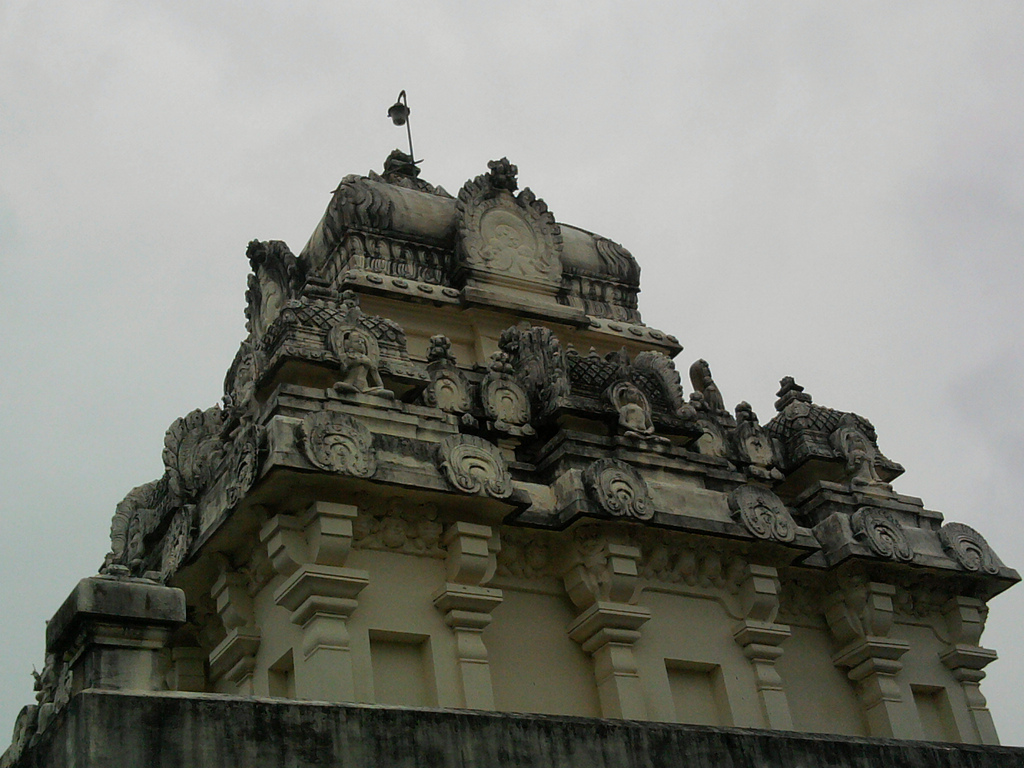
Jain Temples at Tiruparuttikunram
The Jain temples at Tiruparuttikunram (also named "Jina Kanchi") are of special art historical interest, in particular the mural paintings of the Vardhamāna temple. The temple site was described in extenso by T. N. Ramachandran in a monograph titled "Tiruparuttikunram and its Temples", published in may 1934. The following passages were taken from that work.
A regular colony of Jainas seems to have been settled in Kānchīpuram from ancient times and the locality where they lived was styled "Jina-Kānchī" or that part of Kānchī occupied by the Jainas. In the Kānchīpuram taluk, Jaina vestiges are found at Tiruparuttikunram, Ārpākkam, Māgaral, Āryaperurhbākkam etc. Of these Tiruparuttikunram, about two miles from Kānchīpuram, situated on the right bank of the river Vegavatī is popularly known as "Jina-Kānchī" today and formed part of Kānchīpuram from very ancient times. The Jaina temple here is the biggest in the taluk and of great interest, both architecturally and on account of its paintings illustrating the lives of some of the Tīrtharikaras.
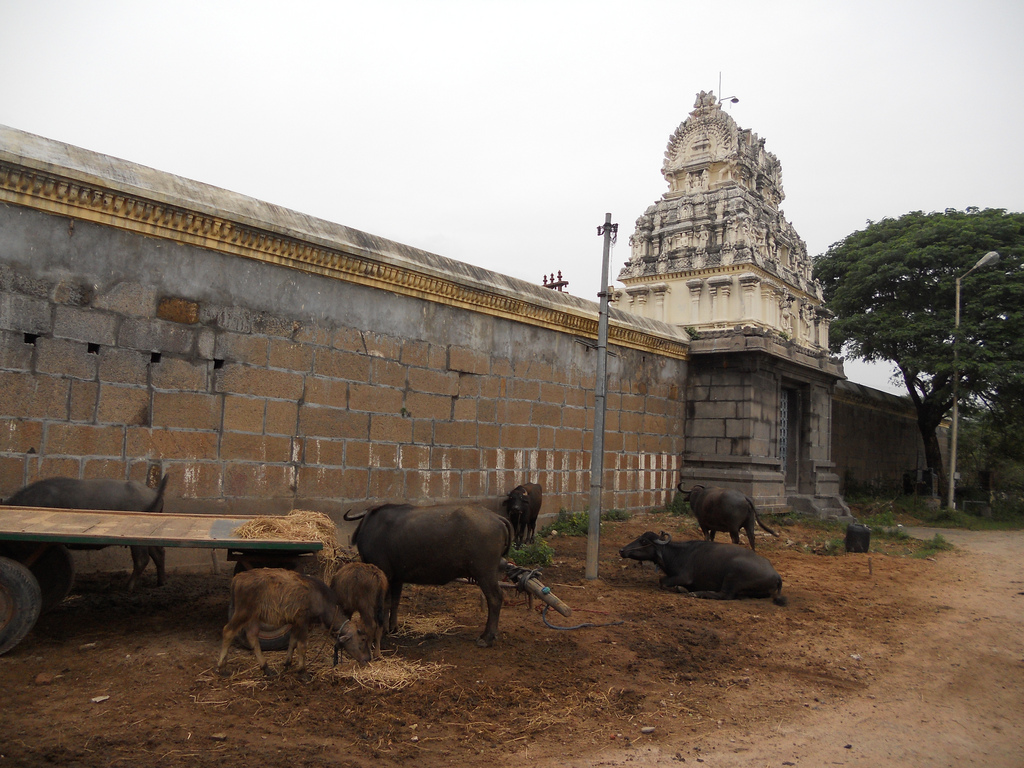
Entrance-building of the Vardhamāna temple complex (Photo by Kesavan Muthuvel)
In the village of Tiruparuttikunram on the outskirts of Kānchīpuram is an enclosure containing two Jaina temples. The smaller of them is in late Pallava style, the larger early Chola with a mandapa in Vijayanagara style. They thus supply an epitome of the main features of the chronological development of Dravidian temple architecture which so far as is known is found nowhere else in so concise and well-balanced a form.
The evidence of architectural style is supported by evidence contained in inscriptions in which the larger temple is particularly rich. And the ceilings of the mandapa and veranda of this temple are adorned with paintings illustrating Jaina mythology.
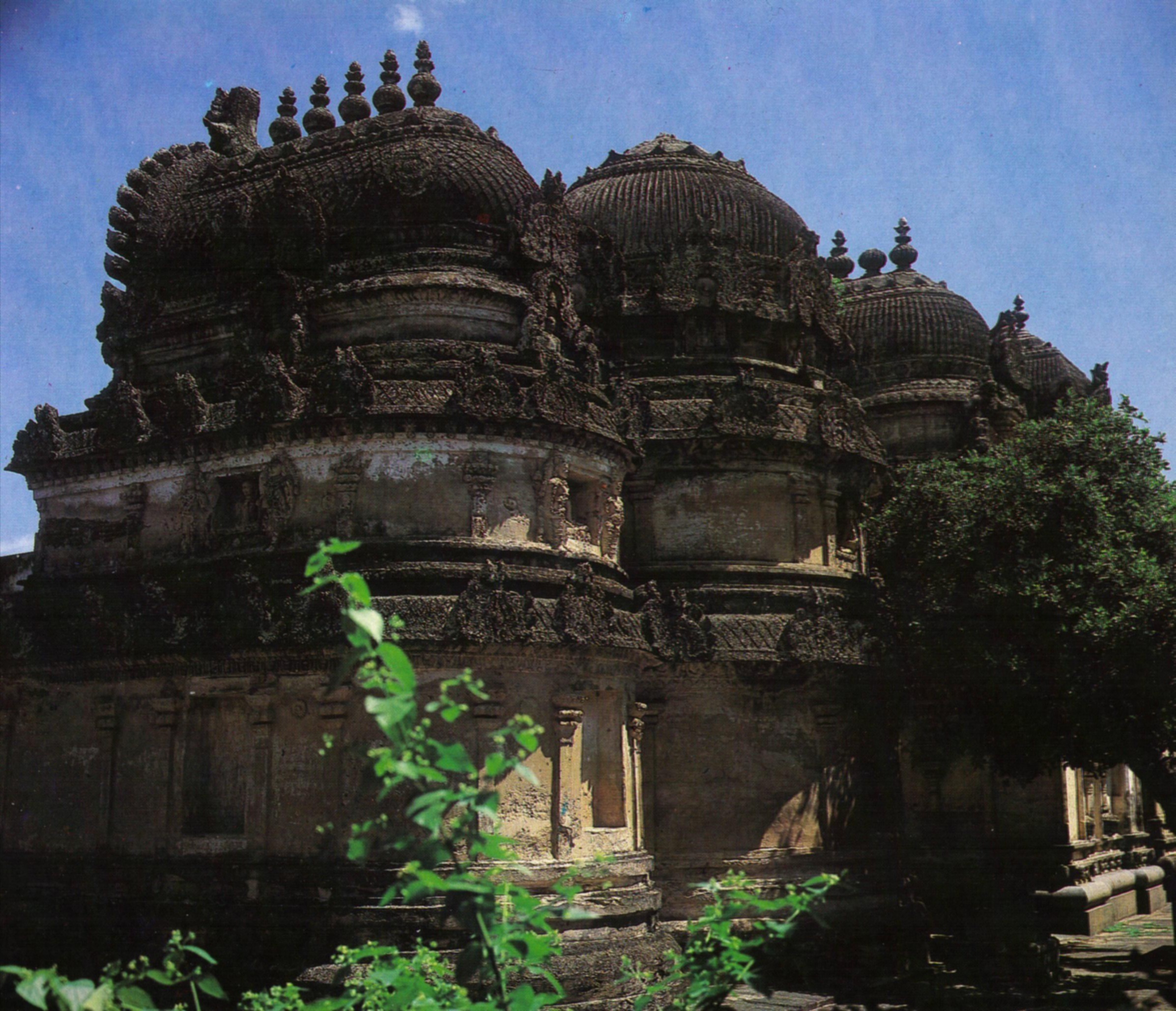
Backside of the apsidal shrine (before restoration) dedicated to Vardhamāna and the adjoining shrines of Pushpadanta and Dharmadevī (Photo from C. Sivaramamurti, Panorama of Jain Art, New Delhi 1988: Plate 124).
The two temples at Tiruparuttikunram are among the oldest temples of the district. The older of the two is a small shrine dedicated to Chandraprabha, the eighth Tīrthankara. The other, which is later, is larger, being in fact the largest Jaina temple in the Kānchīpuram taluk. It is dedicated to Vardhamāna, the twenty-fourth Tīrthankara, popularly known as Mahāvīra and locally as Trailokyanātha. The history of these temples is clearly recorded in their styles of architecture and in the inscriptions found in them. It is for this reason, and on account of a series of paintings in the larger of them, that they are specially interesting. Local tradition says that they owe their existence to a Pallava king and that he built them at the instance of two Jaina teachers, who lived in the village. The first of the tradition is in accordance with the style of architecture of the earlier of the two, but the second part does not agree with inscriptions in the later temple which show that the two teachers mentioned were not contemporaneous with the Pallavas, but flourished some six centuries after them, i.e. in the 14th century.
The Chandraprabha Temple
The small temple dedicated to Chandraprabha lies to the north of the larger temple and is situated in one corner of a garden attached to it. The entrance, which faces east, leads into a narrow transverse passage bounded on the opposite side by a wall. Two Pallava pilasters flank the entrance, one on either side of it, with their inner sides (i.e. the sides facing the entrance) flat.
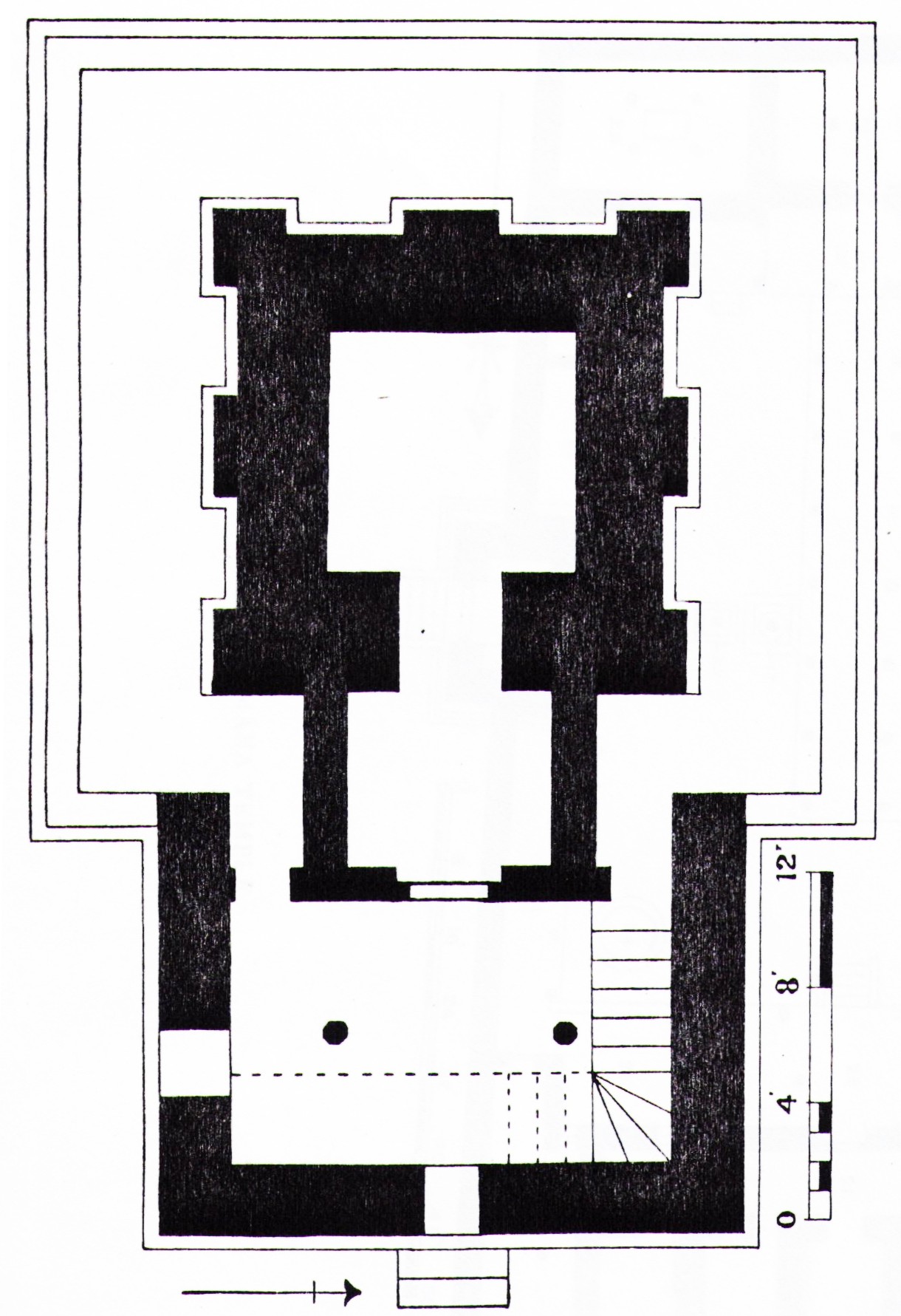
The Vardhamāna Temple
Adjacent to the temple of Chandraprabha and a little to the south of it, is the second and bigger temple, where several other Tīrthankaras are worshipped, chief of them being Vardhamāna (the twenty-fourth Tīrthankara) or Trailokyanātha as he is locally called, from whom the temple derives its name; service is mainly conducted here.
The temple consists of two blocks, an inner one and an outer one, the former located in the centre of the temple and the latter attached to the compound wall of the temple. The various parts of the inner block are as follows: An apsidal shrine dedicated to Vardhamāna (1) stands in the centre with two other shrines, one on each side of it. The latter shrines are dedicated to Pushpadanta (2), the ninth Tīrthankara, and Dharmadevī (3), respectively. In front of these three shrines is a pillared hall or ardha-mandapa [with an elevation (5)] which we may call the Vardhamāna-ardha-mandapa (4). To this is attached in front a mukha-mandapa which we shall term the Vardhamāna-mukha-mandapa (6). Adjoining the above three shrines and to the left of them is a group of three other shrines dedicated to three other Tīrthankaras, Padmaprabha (7), Pārsvanātha (9) and Vāsupūjya (8), sixth, twenty-third and twelfth Tīrthankaras, respectively. In front of these three shrines is an ardha-mandapa similar to the Vardhamāna-ardha-mandapa. This will be referred to as the Trikūta-Basti-ardha-mandapa (10). As in the case of the Vardhamāna-ardha-mandapa here also there is a mukha-mandapa attached to the Trikūta-Basti-ardha-mandapa which shall be termed the Trikūta-Basti-mukha-mandapa (11) And in front of the Trikūta-Basti-mukha-mandapa and the Vardhamūna-mukha-mandapa and attached to them is a pillared hall (kalyana-mandapa) which we shall call the Sangīta-mandapa (12), a name by which it is referred to in one of the inscriptions.
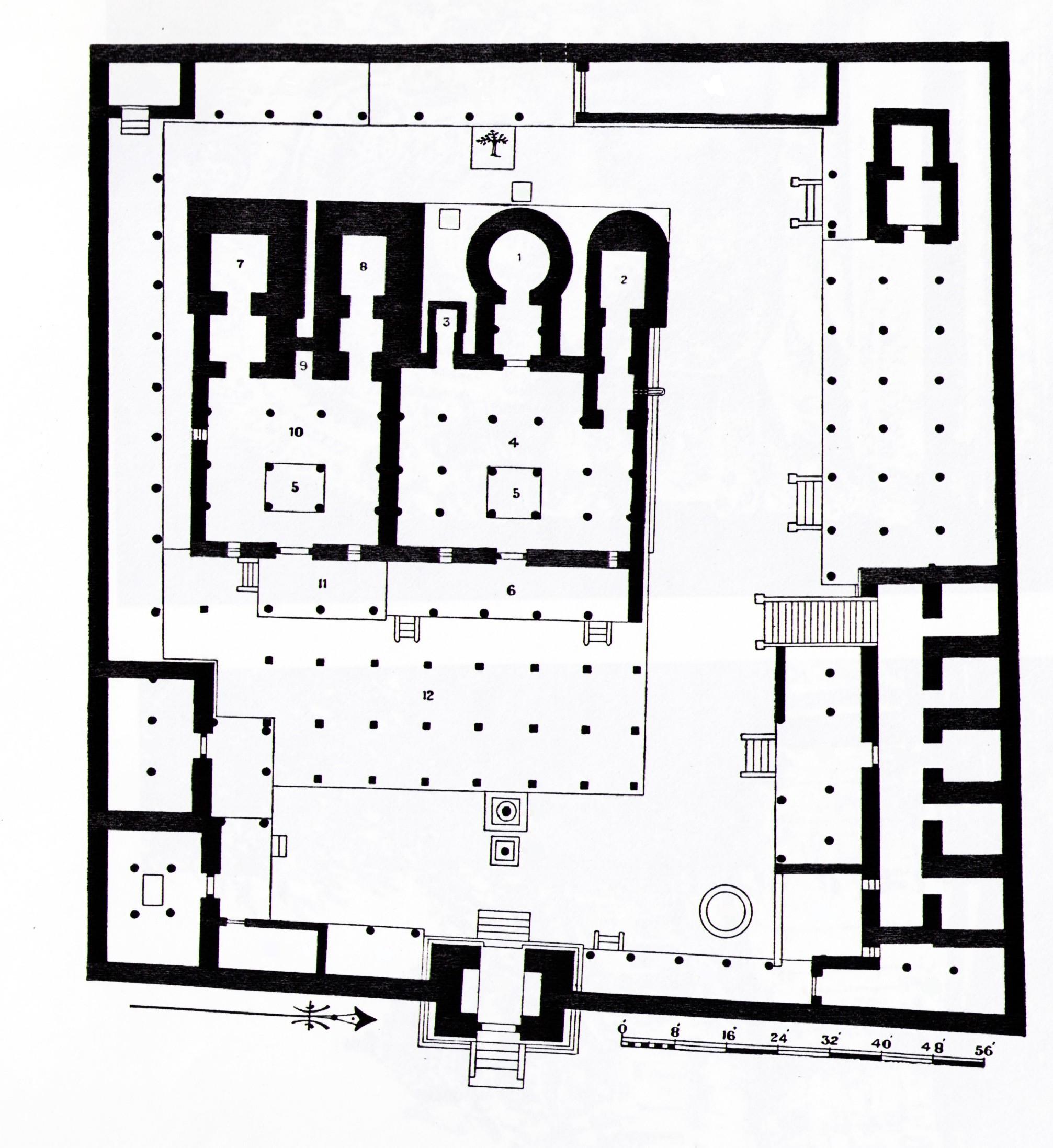
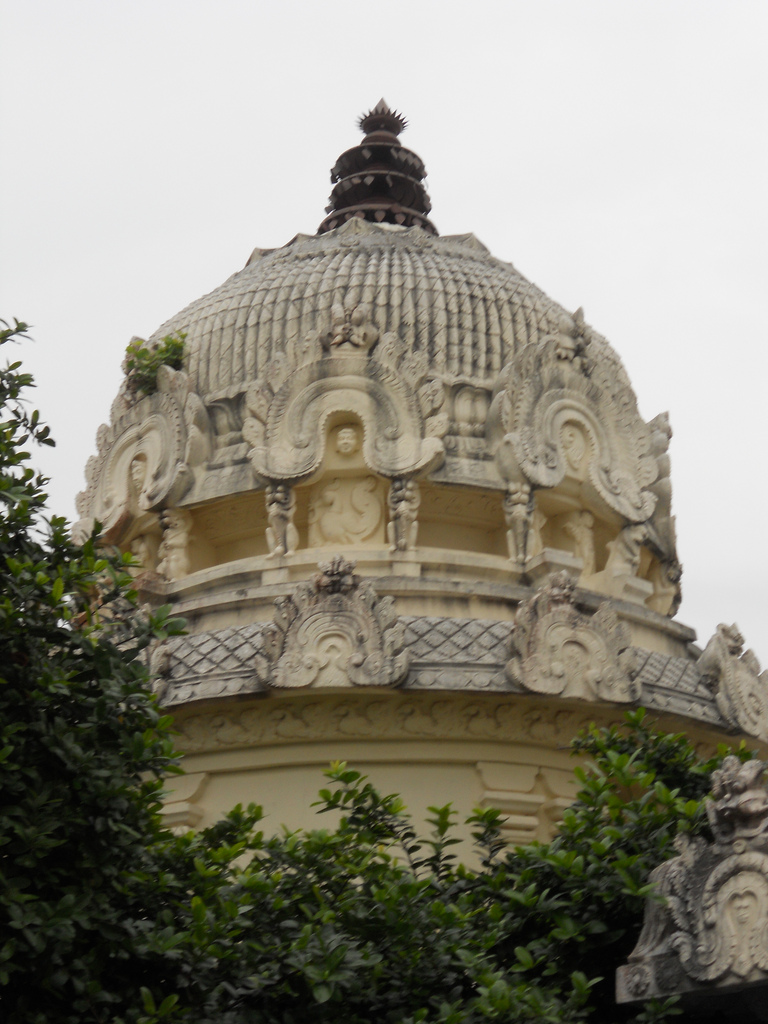
Vardhamāna temple (Photo by Kesavan Muthuvel)
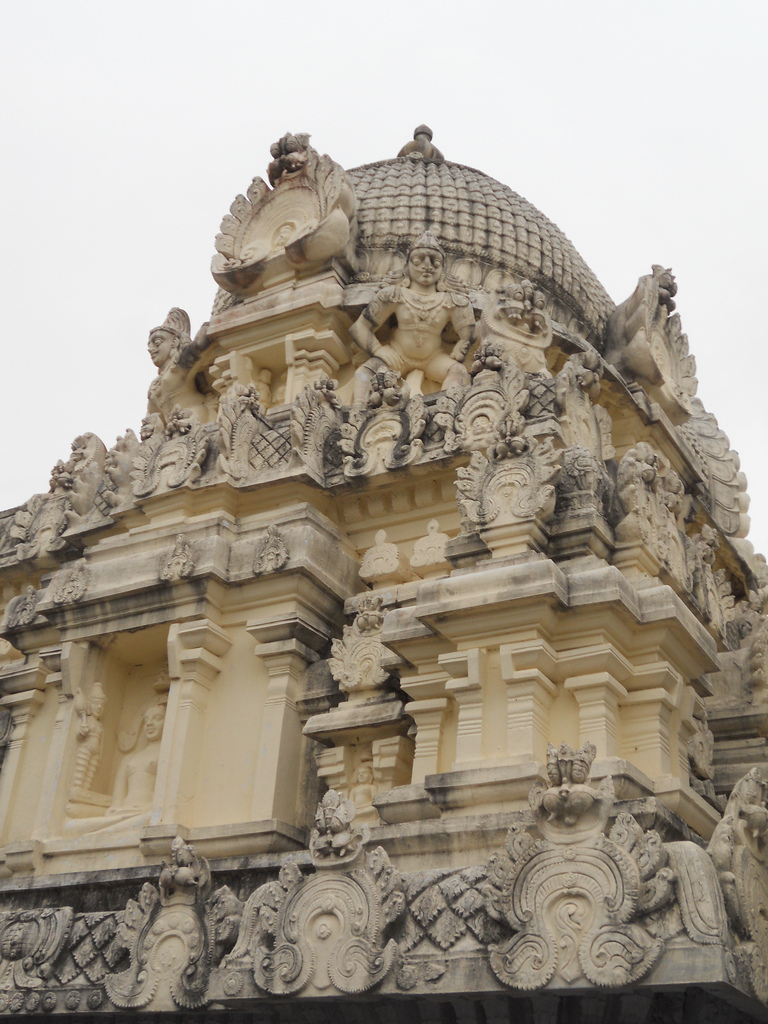
Vardhamāna temple (Photo by Kesavan Muthuvel)
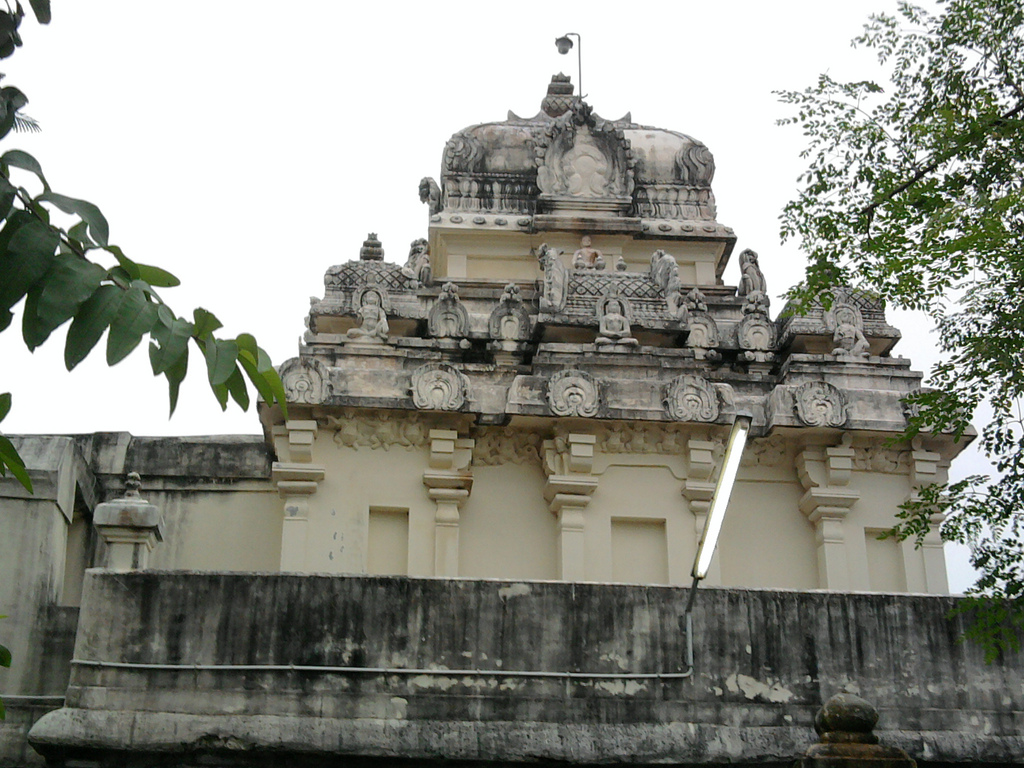
Candraprabha temple (Photo by Kesavan Muthuvel)
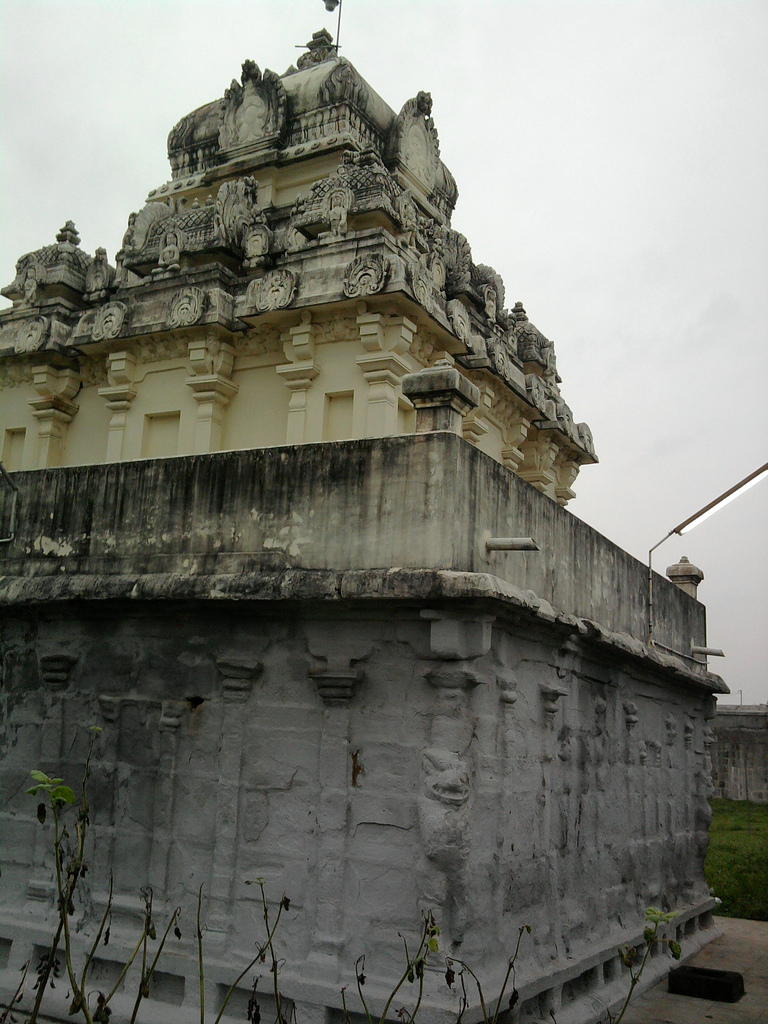
Candraprabha temple (Photo by Kesavan Muthuvel)
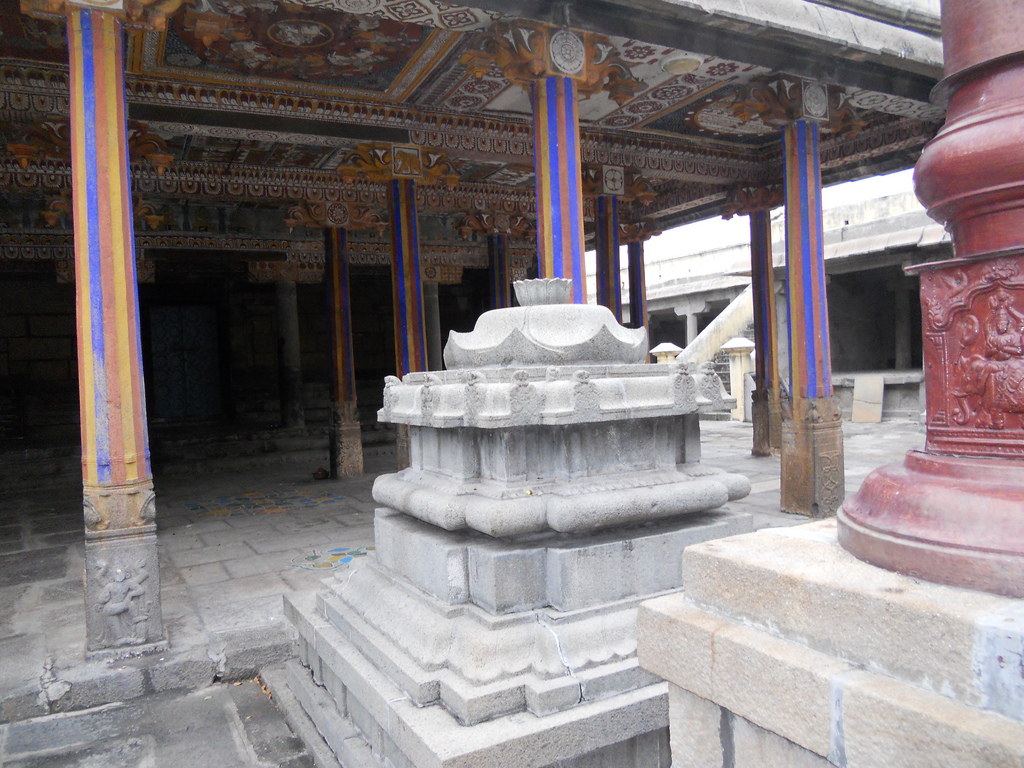
Sangīta-mandapa of the Vardhamāna temple (Photo by Kesavan Muthuvel)
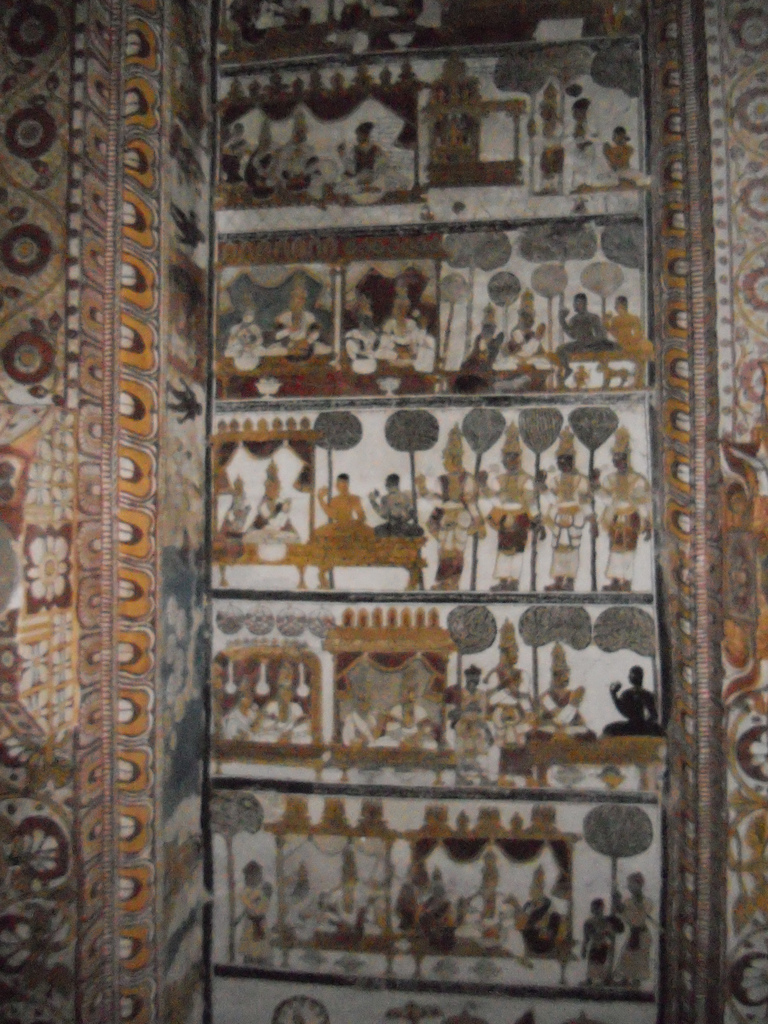
Wall painting of the Vardhamāna temple: Scenes from the life of Rishabhadeva. (Photo by Kesavan Muthuvel)
First section - (left-to-right): The Vidhyādhara king Mahābala and his wife listening to their minister Svayambuddha; Mahābala performing with his minister āshtānhika-vrata in Siddhakūta-chaityālaya.
Second section - (left-to-right): The deva Lalitānga and his wife Svayamprabhā; king Vajrajangha and his wife Śrīmati; king Vajrajangha and Śrīmati hearing from chārana sages their previous births, along with their minister, priest, general and treasurer. Four animals, a tiger, monkey, boar and mongoose also listen.
Third section - (left-to-right): The king and queen who were born as a couple in Uttamabhogabhūmi listening to dharma from chārana sages. The four animals, tiger, monkey, boar and mongoose of the previous birth are now born as āryas and are also listening to dharma from the same sages.
Fourth section - (left-to-right): The deva Śrīdhara and his wife; King Suvidhi and his wife Manoramā; disgusted with worldly life Suvidhi received dīkshā from a sage.
Fifth section - (left-to-right): Achjutendra and his wife; king Vajranābhi and his queens.
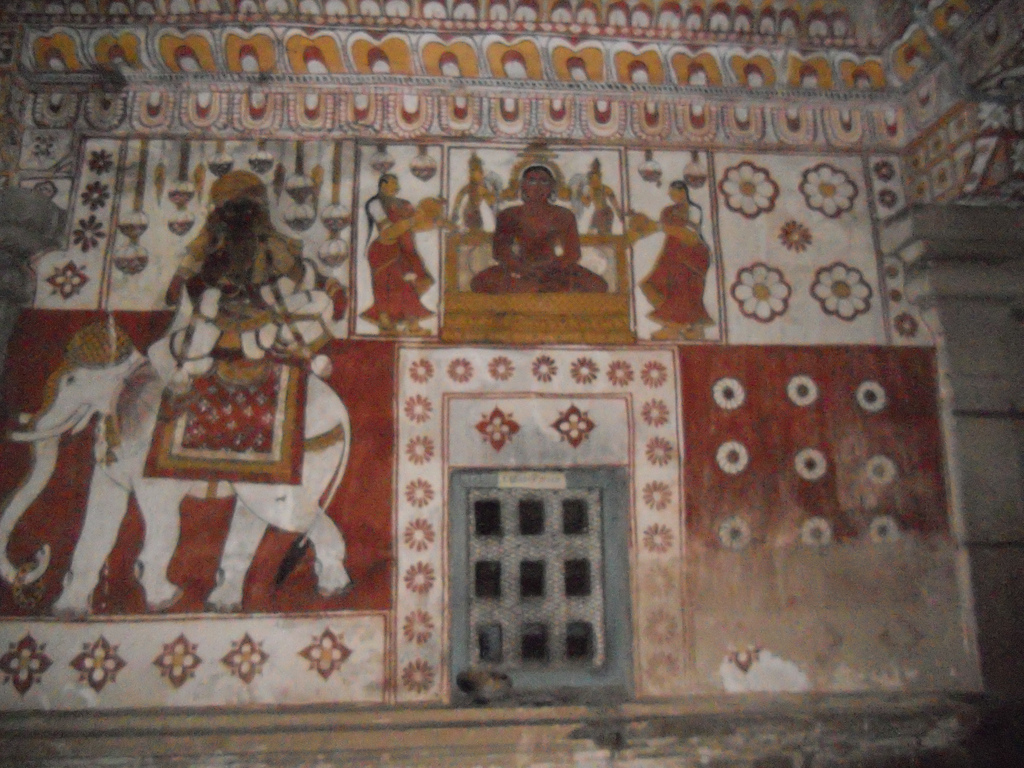
Wall Painting of Vardhamāna temple (Photo by Kesavan Muthuvel)
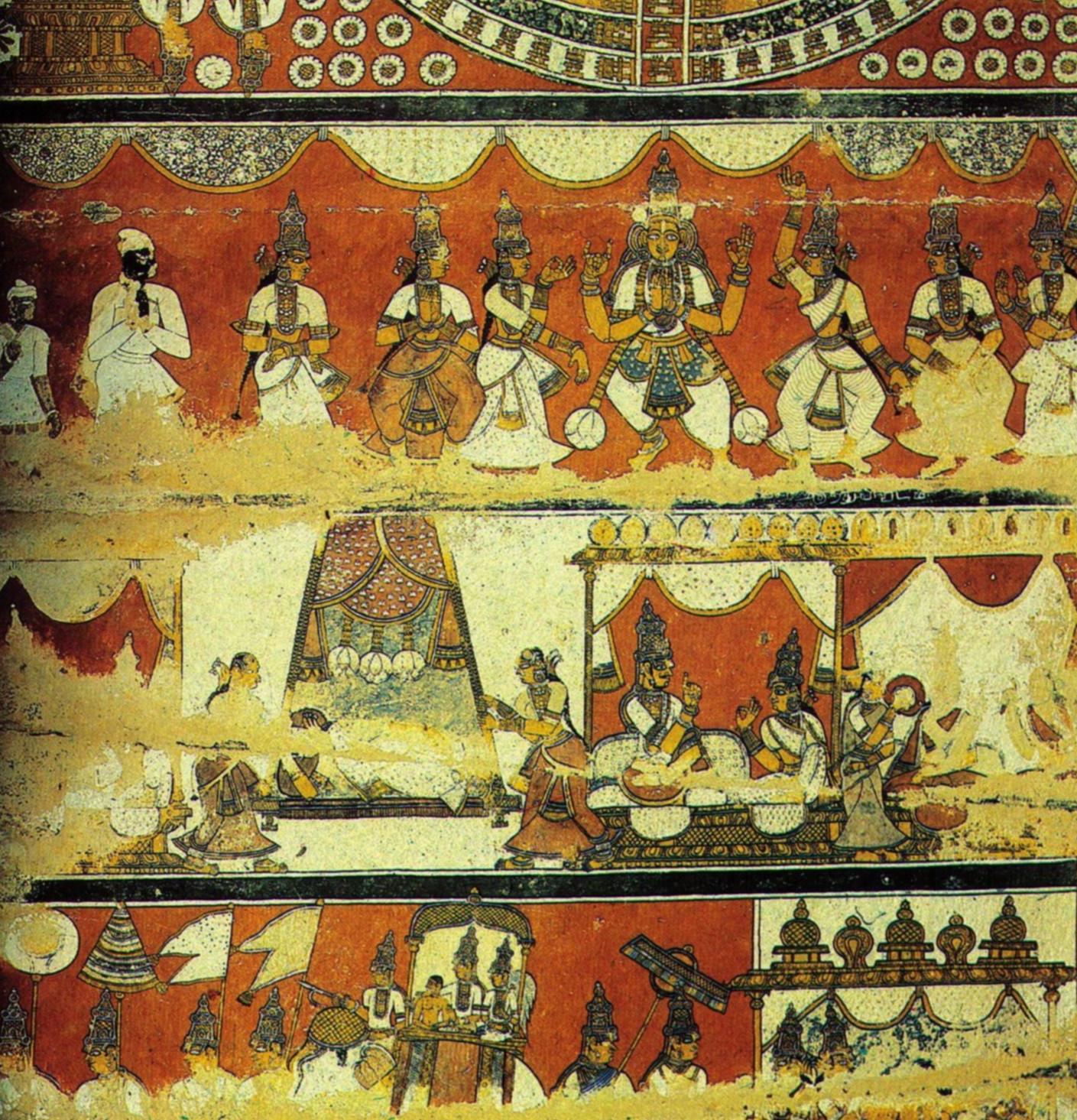
Wall painting of the Vardhamāna temple, Nāyaka, 17th century (Photo from C. Sivaramamurti, Panorama of Jain Art, New Delhi 1988: Plate 410).
Upper section - Scene from the life of Rishabhadeva: Saudharmendra's dance at the sight of the Samavasarana.
Middle section - Scenes from the live of Vardhamāna (Mahāvīra). King Siddhārta and his wife Priyakārinī: Priyakārinī dreaming (left) and telling the dream to her husband (right)
Lower section - Sachī, the wife of Saudharmendra removing the child (Vardhamāna) for janmābhisheka.
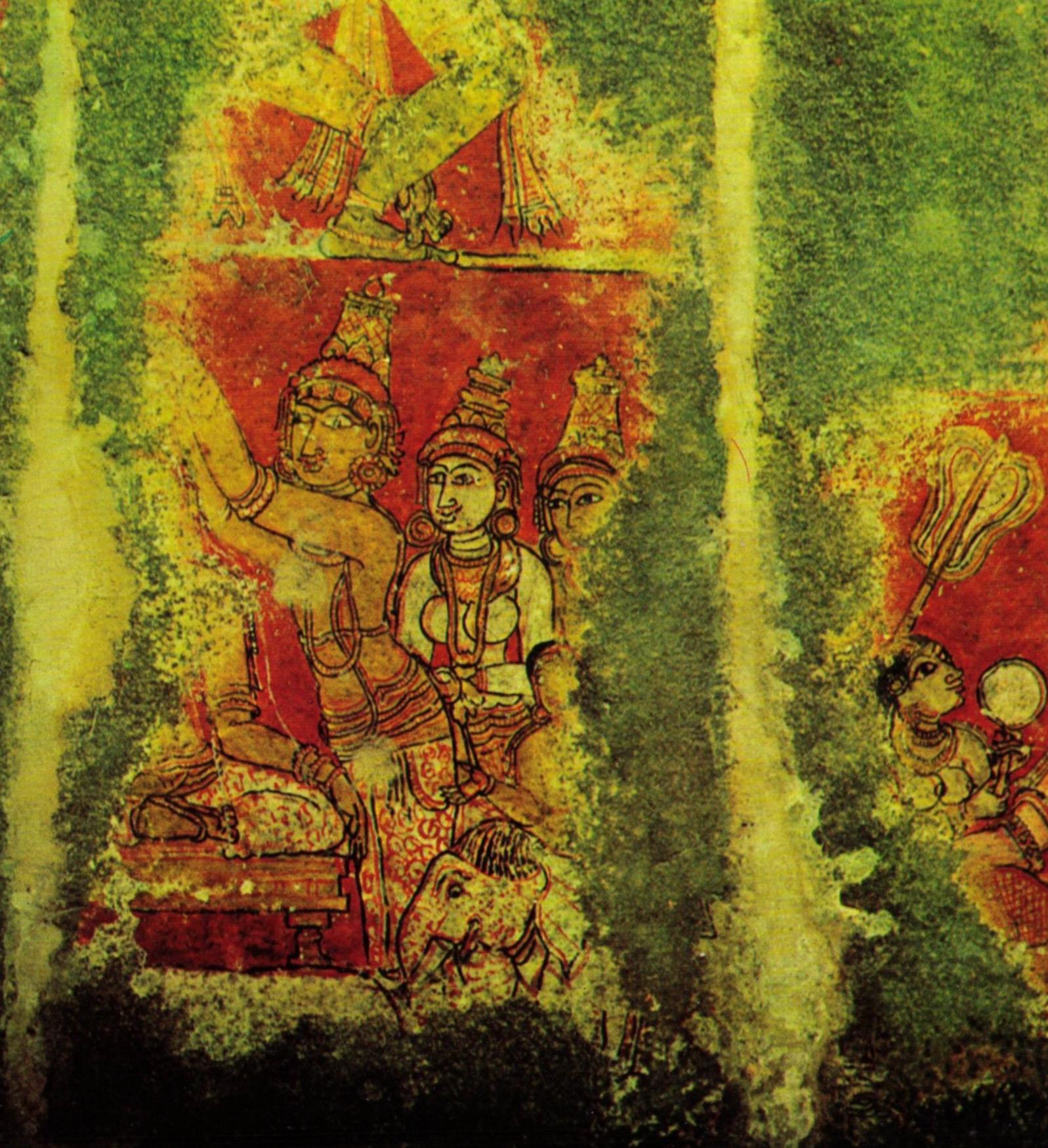
Vardhamāna temple: Earlier phase of wall painting. Scene of birth of a child. Vijayanagara, 15th century. (Photo from C. Sivaramamurti, Panorama of Jain Art, New Delhi 1988: Plate 409).
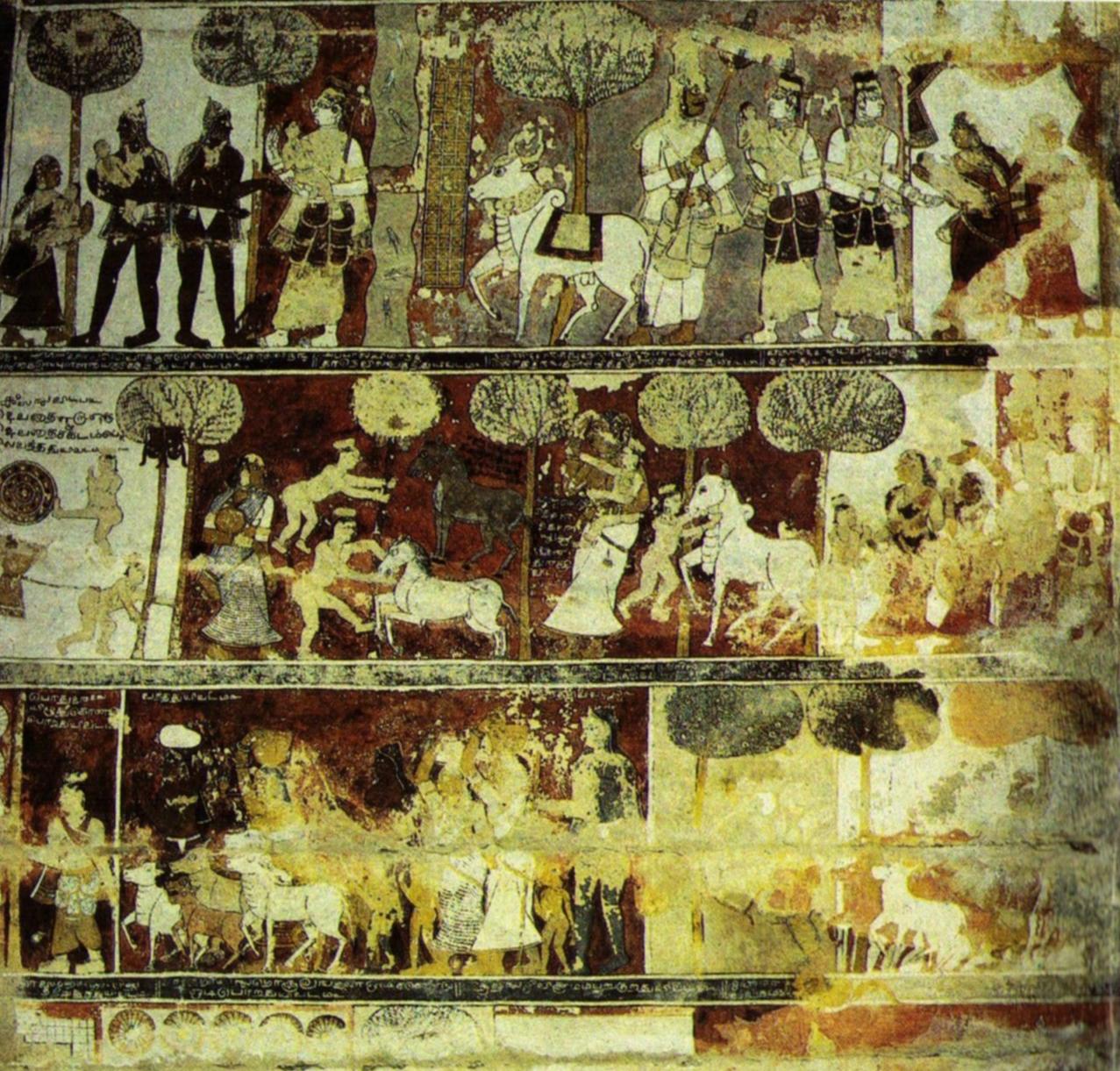
Wall painting of the Vardhamāna temple, Nāyaka, 17th century (Photo from C. Sivaramamurti, Panorama of Jain Art, New Delhi 1988: Plate 412).
Upper section - Scene from the life of Krishna, the cousin of Neminātha (right-to-left): Baladeva removing the child from the chamber of nativity; Vasudeva holding an umbrella over the child; the presiding deity of the city (in form of a bull) showing Baladeva the way; the city gate opened of its own accord; the river Jumna divided and gave him the way; Baladeva delivering the child unto the care of Nanda Gopa, and the latter's wife receiving the child from her husband.
Middle section - The sports of child Krishna and the annihilation of seven evil spirits sent by Kamsa (left-to-right): One of the evil spirits that came in the form of a wheel. Two other evil spirits that came in the form of trees and stood hisway as he was dragging the mortar to which he was tied by his foster-mother; three more evil spirits that came in forms of a palmyra tree, a horse and an ass respectively; the seventh evil spirit that came as a woman offering Krishna milk from her breasts smeared with poison; subjugation of the deva Arishta, who came as a bull to test Krishna's strength; Devakī, Baladeva and Vasudeva arriving just then on the scene, and Devakī admiring her son with motherly love, milk flowing out of her breasts spontaneously.
Lower section - (right-to-left): Krishna raising up Mount Govardhana; Krishna doing trivikrama; Nanda's flight from the village with his cowerds and cattle out of fear for Kamsa; Krishna assuring Nanda of his strength by lifting on the way a huge stone column, thus prevailing on him to return to the village.
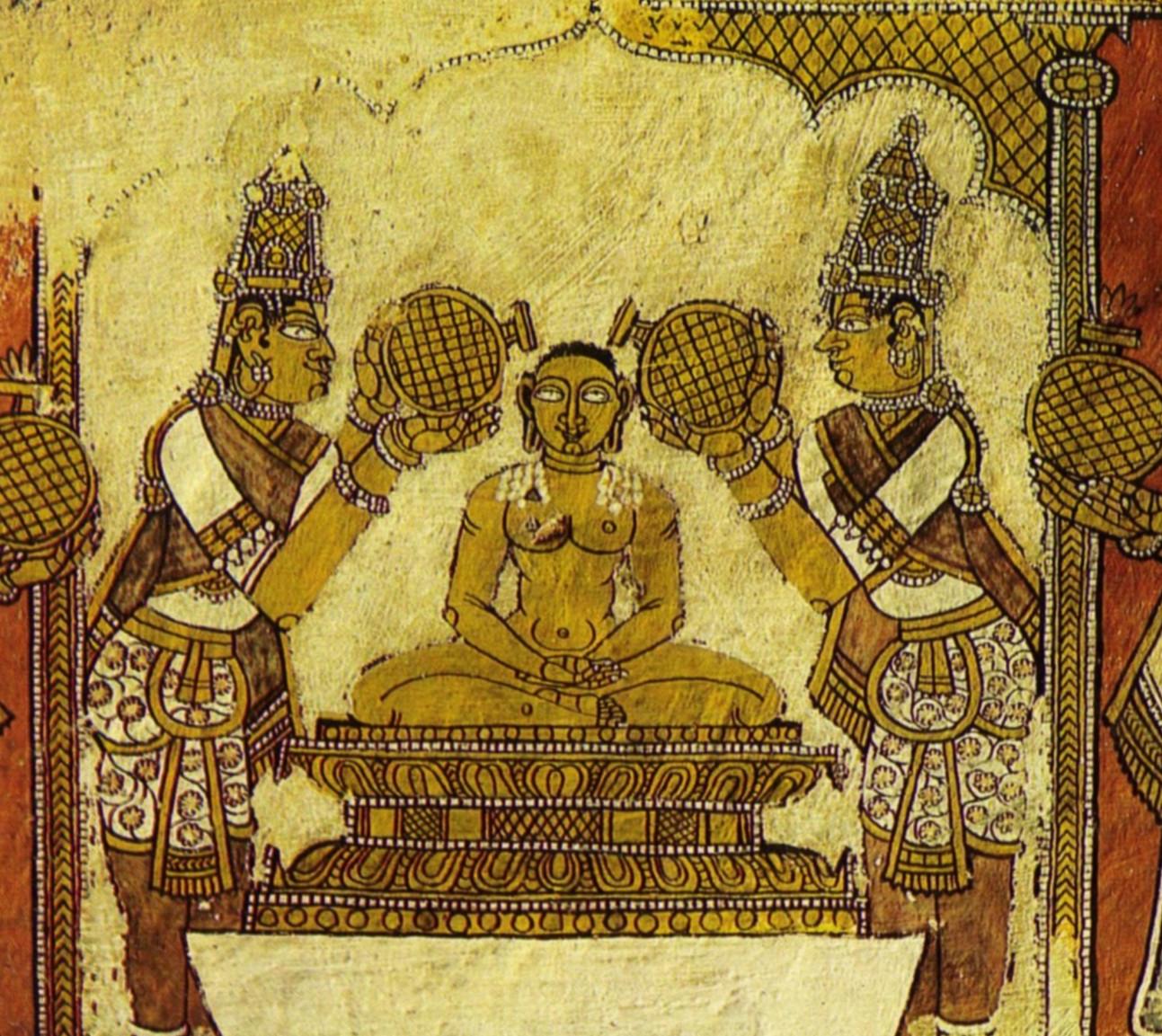
Wall painting of Vardhamāna temple - Scenes from the life of Vardhamāna: Abhisheka. Vijayanagara (Photo from C. Sivaramamurti, Panorama of Jain Art, New Delhi 1988: Plate 411).
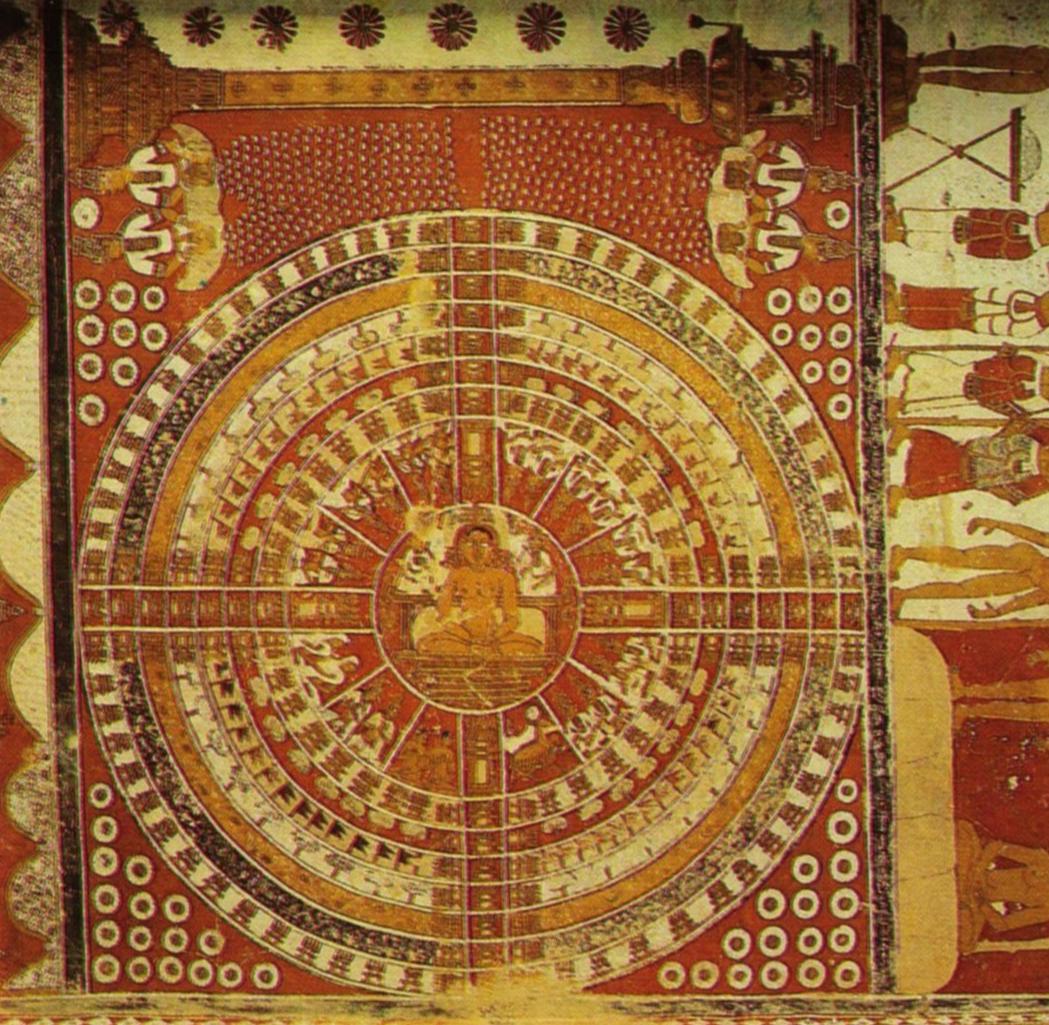
Wall painting of Vardhamāna temple - Samavasarana, Nāyaka, 17th century (Photo from C. Sivaramamurti, Panorama of Jain Art, New Delhi 1988: Plate 413).
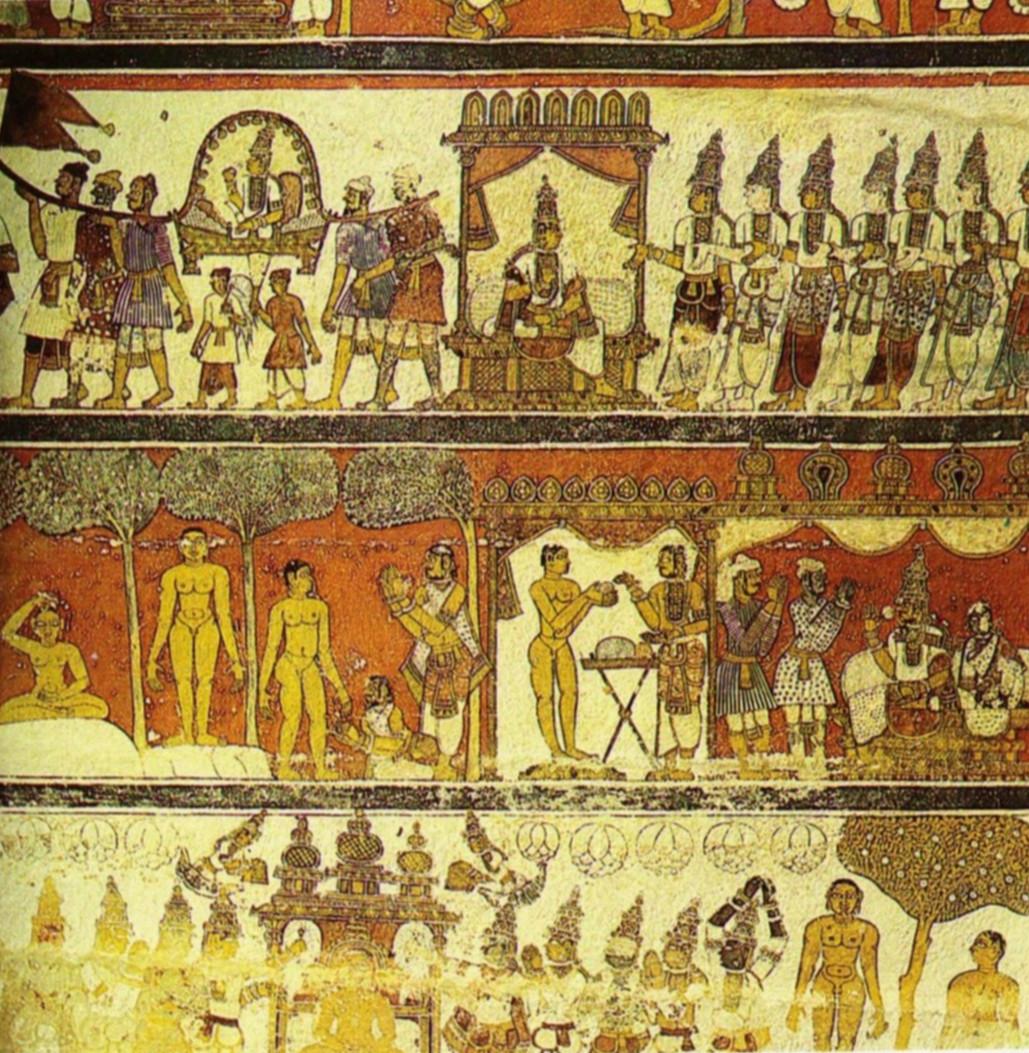
Wall painting of the Vardhamāna temple, Nāyaka, 17th century (Photo from C. Sivaramamurti, Panorama of Jain Art, New Delhi 1988: Plate 415).
Upper section - Scenes from the live of Vardhamāna Mahāvīra (right-to-left): Vardhamāna getting the spirit of world-flight (vairāgya) and the Laukāntikas appearing before him just then and reminding him that it was time for him to renounce the world and take to dīkshā; Vardhamāna proceeding to the forest for dīkshā in a palanquin.
Middle section - Scenes from the live of Vardhamāna Mahāvīra (left-to-right): Vardhamāna performing dīkshā; Vardhamāna going out for charyā and partaking of food offered by king Kūla of Kūlagrāma.
Lower section - Scenes from the live of Vardhamāna Mahāvīra (right-to-left): Vardhamāna spending all his karma and doing penance to obtain kevala-jnāna; Vardhamāna becoming a kevalī and the devas worshipping him after the event in the gandhakuti.
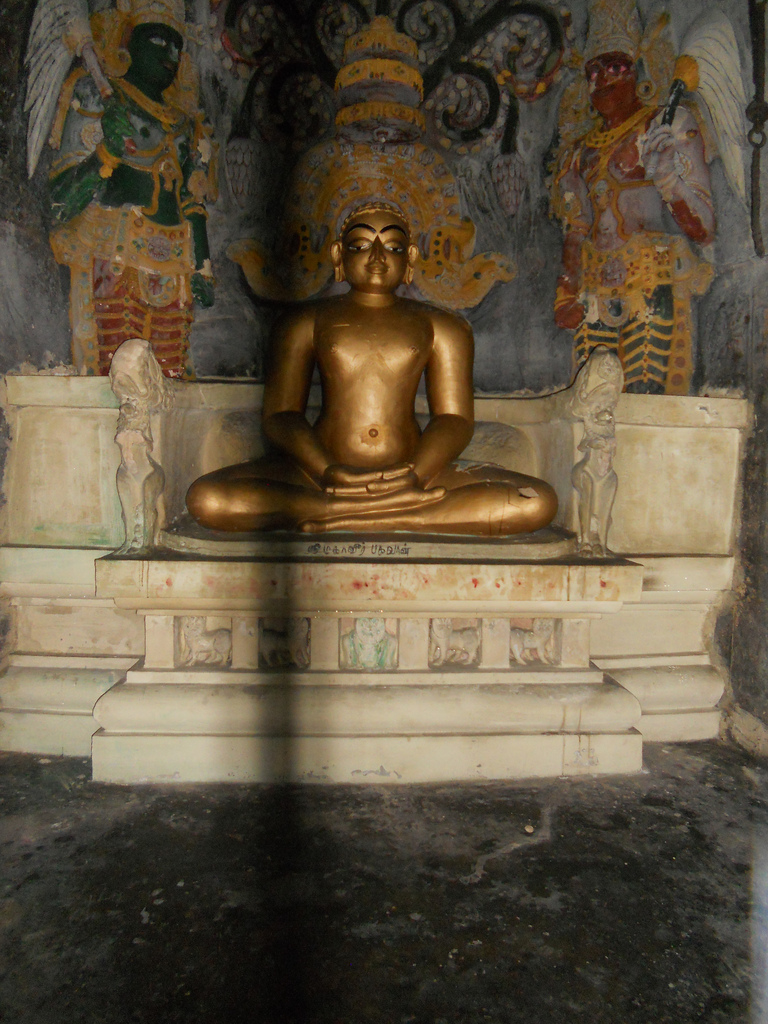
Vardhamāna temple (Photo by Kesavan Muthuvel)
 T. N. Ramachandran
T. N. Ramachandran